
The Nature of Abstraction
Scully meets Gierowski in Warsaw
In 1945, the year that Sean Scully was born in Dublin, Stefan Gierowski, aged 20, enrolled at the art academy in Krakow, making his first steps into the arts. In the subsequent years, he navigated stylistic possibilities, looking with interest at avant-garde art movements from the West, but also facing the demands as phrased by the communist regime in post-war Poland. Art should be for the people, an idea that Gierowski would not disagree with per se, but how it should look was another question.
Scully and Gierowski grew up in different contexts in western and eastern Europe (Scully also went to the US, which influenced his painting), but as their respective artistic lives developed, both came to embrace abstract painting. They never met in person, but a recent exhibition at the Fundacja Stefana Gierowskiego in Warsaw brought the works of the two together, creating a dialogue (posthumously, for Gierowski) Beyond the line, as the title of the show indicated. It turned out to be an exhibition that made you think about the nature of abstraction and how it can relate to our present lives.
Beyond the Line. Photo: Adam Gut
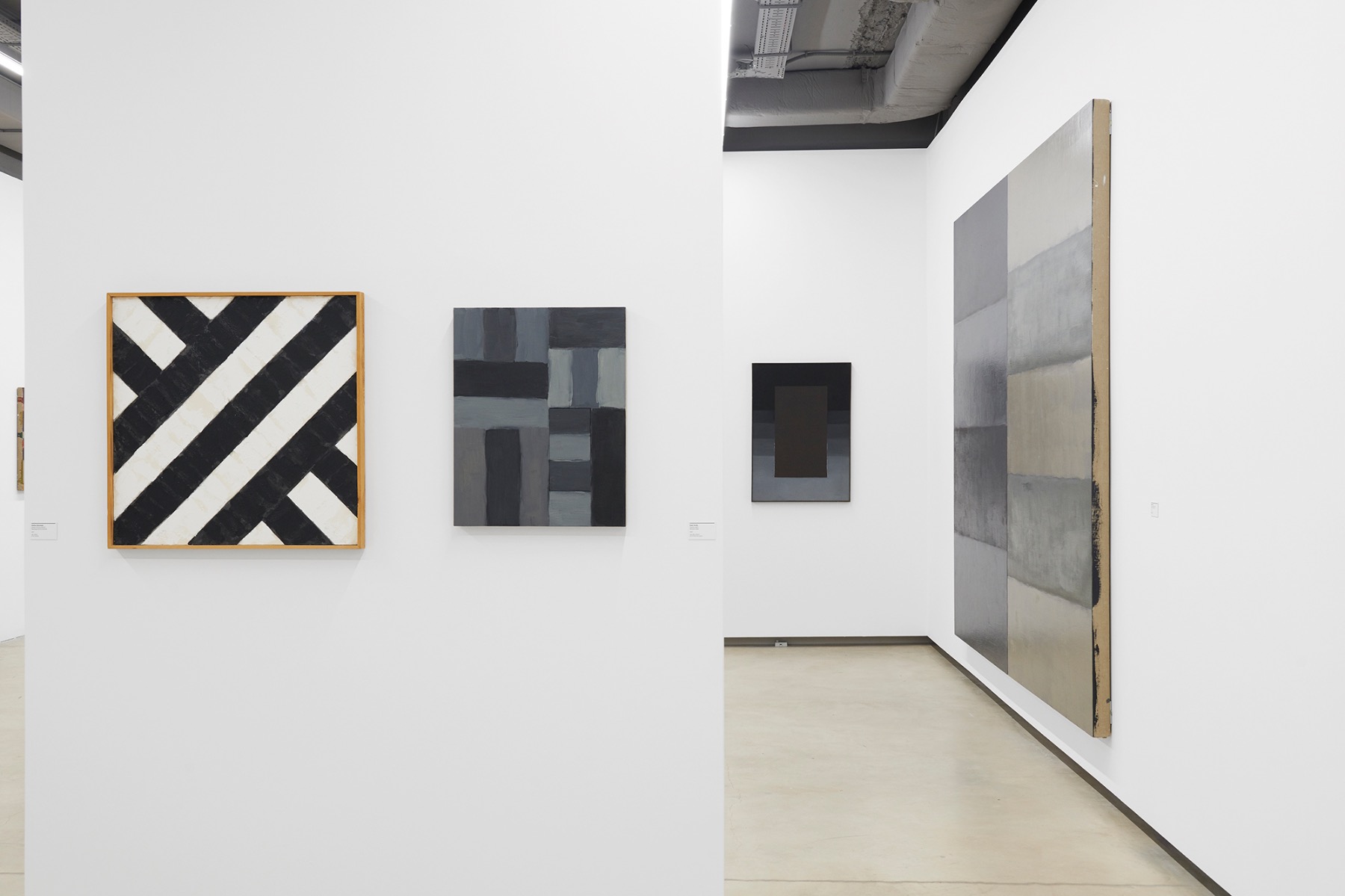
Curator Joachim Pissaro speaks in his introduction about the abstract movement, but one might wonder if it is a movement (or style) at all. Painters may use the same type of geometric forms, squares, lines, or color bands, yet works can have different motivations and impacts. In the case of Scully and Gierowski, there are such shared formal interests as the line and its widening to a band or other shape. They both also work with just a handful of elements to make a painting. But the temperaments underneath, and how the forms come out and take life on the surface, seem quite different. If two people wear the same type of coat, it does not mean they will look alike.

Scully has noted that an abstract painting cannot really be for or against something. One cannot appropriate an abstract painting to illustrate something based on subject matter or narrative. For Gierowski this must have been a critical advantage, as it created distance to the official socialist realist style that the political establishment in Poland identified with. The painting spoke in other ways – through surface, paint application, color, light, and sense of balance. But maybe even more importantly, art for him was about something you cannot really grab, an abstract quality in the sense of “not tangible.”
The absence of what can be named or identified has made abstract painting suitable for spiritual or mystical readings. Just as in religion, where the essence, or God, cannot be depicted, the very essence of an abstract painting cannot be extracted. It resides within the painting. That is, if it works at all. This does not mean that abstract painting leans automatically towards the spiritual. It seems to be a matter of where the artist directs his attention. A work can also be focused on optics and perception, or it can present a structural model aimed at understanding the world through the metaphor of forces at play. Throughout the exhibition, such options present themselves, activating the question in what capacity does a painting work, and also, when exactly does it come alive. The answers keep changing.
Sean Scully: Grey Wall. 2019.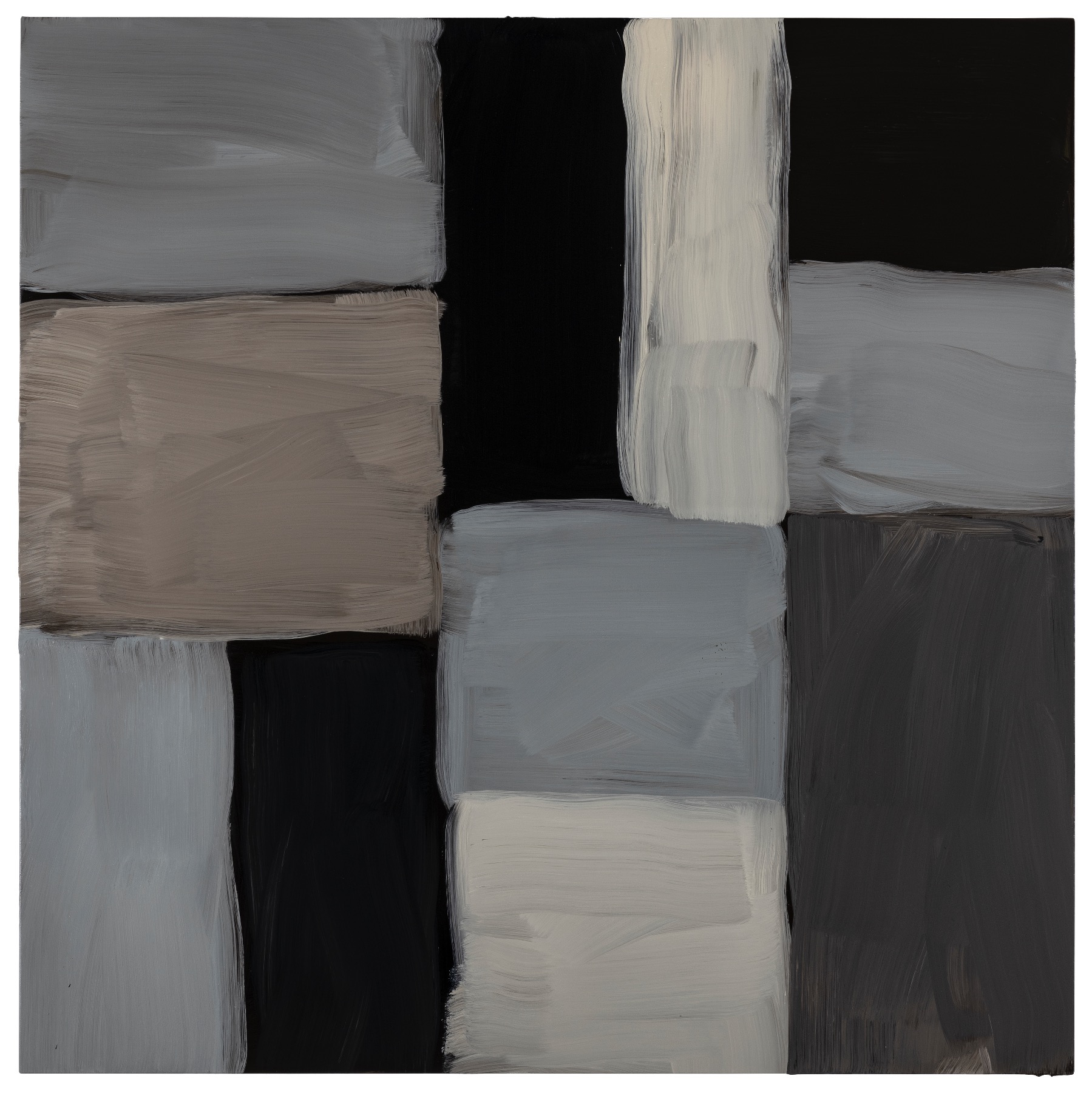
Sean Scully: Painting Cream and Black. 1975.
For Scully, as Pissaro describes in the catalog, art was a respite from early on, offering beauty and calm in a turbulent, poor, and streetlife reality. When Scully attended school, the encounter with art presented an escape in the best sense of the word, a way out of trouble, offering moments of recuperation and hope for something else. This interest developed and manifested later on in Scully’s work, for instance in the chapel he decorated for the Hortensia Herrero collection in Valencia, a sacred space with a combination of paintings, glass, color, and light. This aspect of Scully’s work is certainly not the only one – the artist is also earthbound, relating to the color and shapes of a building or of landscapes, enjoying the physical existence and structures he observes, as can be sensed in works such as Taped Painting Cream and Black (1975), where strips of tape create a woven pattern on the surface, and Grey Wall (2019), which suggests a stacking of stones or otherwise constructive elements. Scully’s paintings seem to be the result of working through complexities to attain a sense of order and simplicity, and this feels like an important part of what the artist has to offer. He has cleared things up.
Sean Scully: Block. 1995.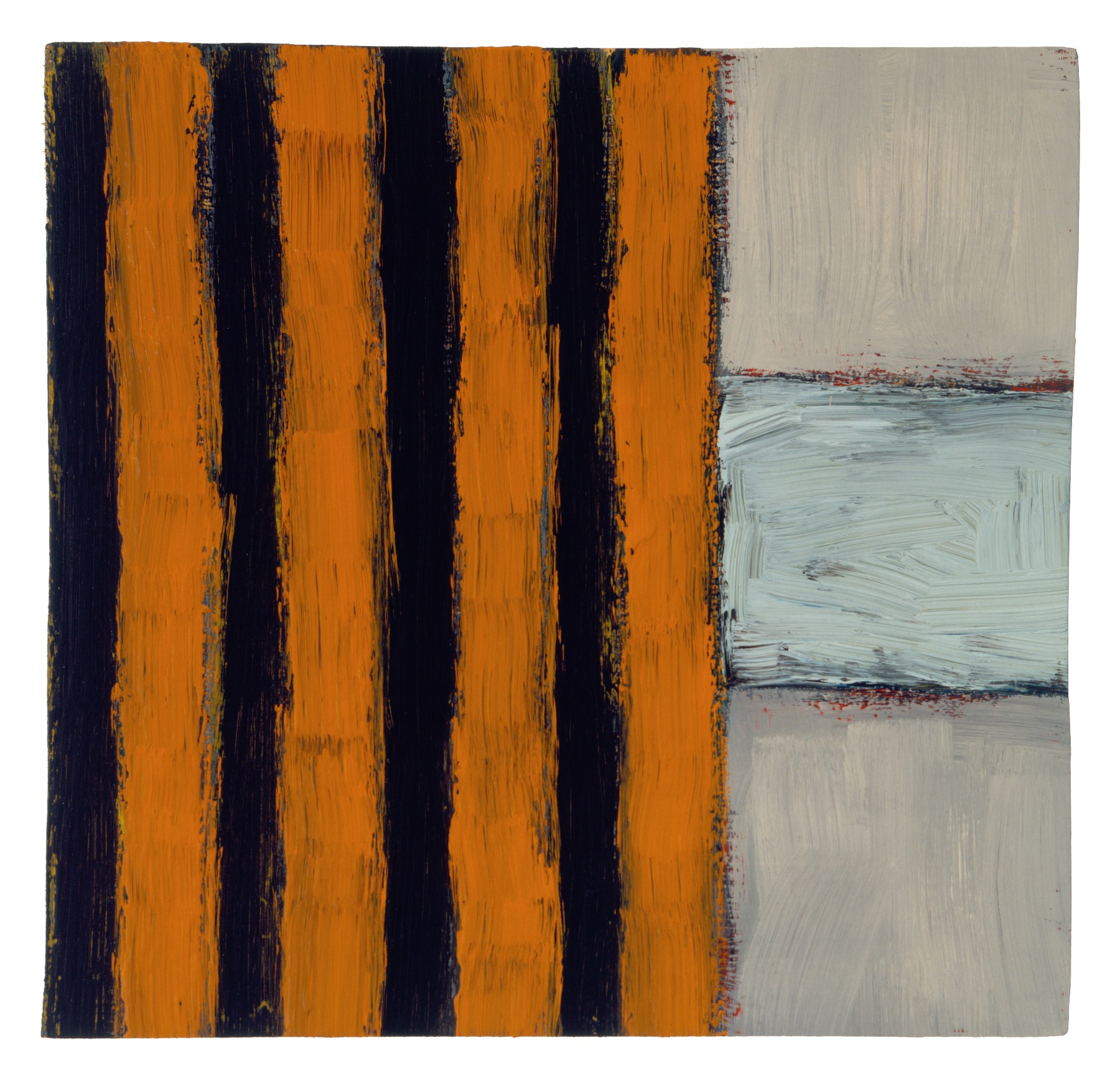
In Gierowski’s case, it seems that part of the work starts from an interest in how color relations work out, how they might or might not create the illusion of space, or evoke a certain lightness. More than Scully, Gierowski stretches his palette from the deepest dark to the very bright, including some loud and cheeky colors. Seeing the works he made over a half a century, it struck me how fresh and crisp some of them look, like Painting DCCXXVIII (1998), for example, while others appear more dated, or belong to what was “going around” at the time Gierowski made them. There are quite a few cases where he transcends his time, which gives his work great appeal. Abstraction, it seems, offered him a ticket outside his time and cultural context, and also across borders, even if he did not have much possibility to travel.
Stefan Gierowski: Painting DCCXXXV. 1999. Photo: Adam Gut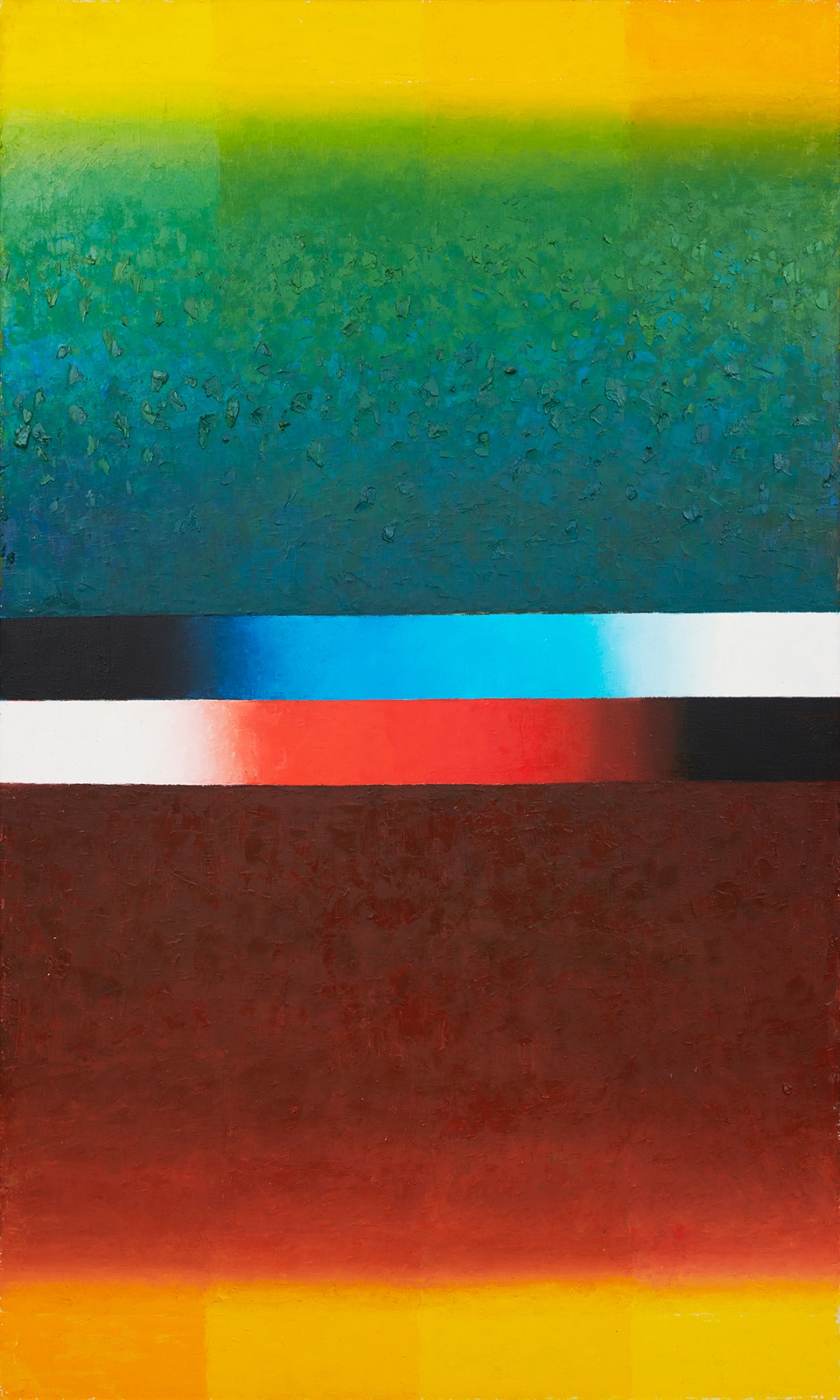
Gierowski appears to have been an analytical and cautious painter who carefully studied modern movements such as Futurism and Surrealism, taking what fit his interests in how to create movement with only abstract forms, or how to create space through color contrasts. There is a lot of attention in the handwork, the brushstroke, the treatment of surfaces, and the construction of the painting. Yet all that seems to happen with the objective of making paintings that at some point forget all about their physical existence and take off, so to speak, getting wings and becoming metaphysical reflections.
Stefan Gierowski: DCCCV. 2003 -2004. Photo: Adam Gut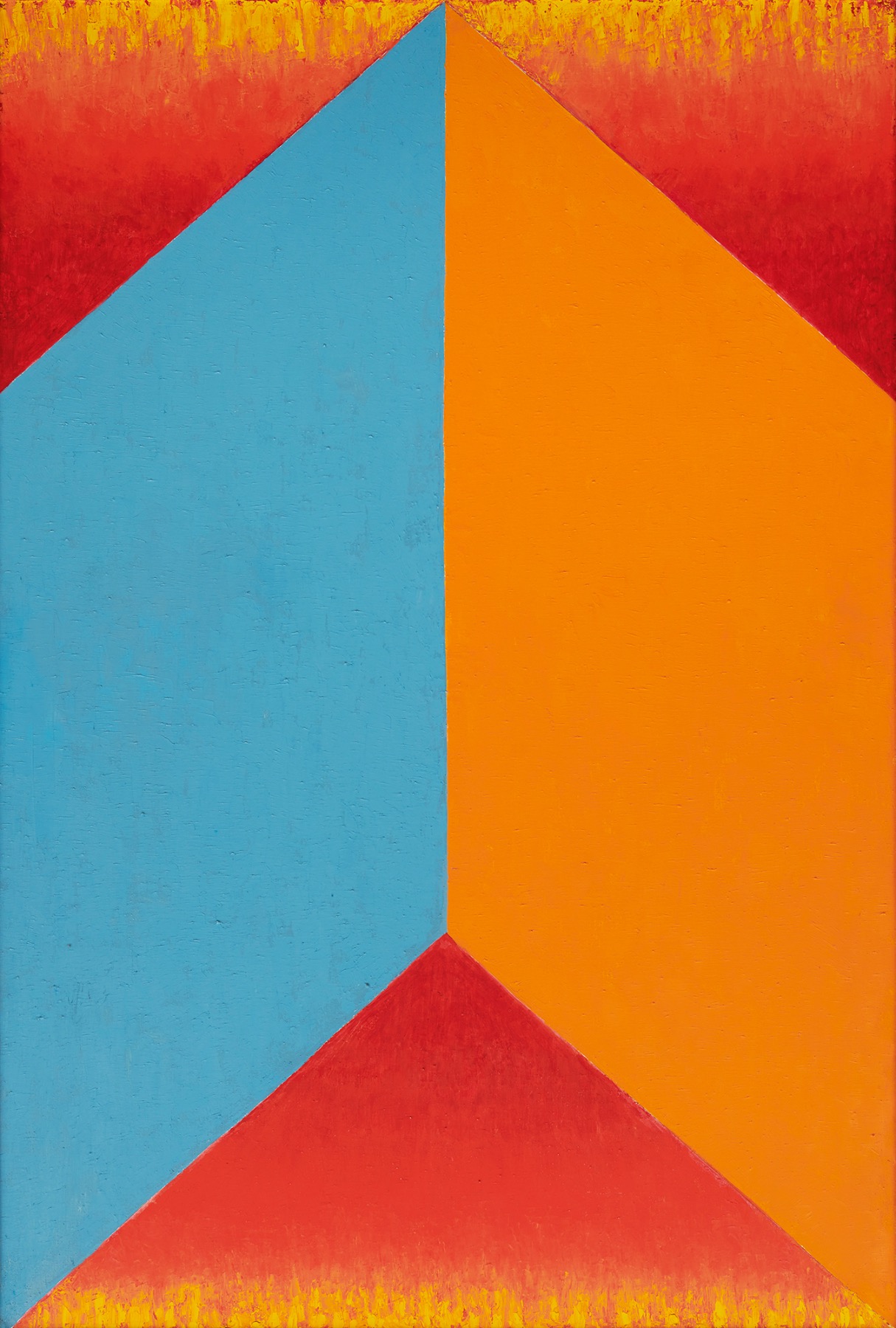
Stefan Gierowski: CCCLXXIII. 1976. Photo: Adam Gut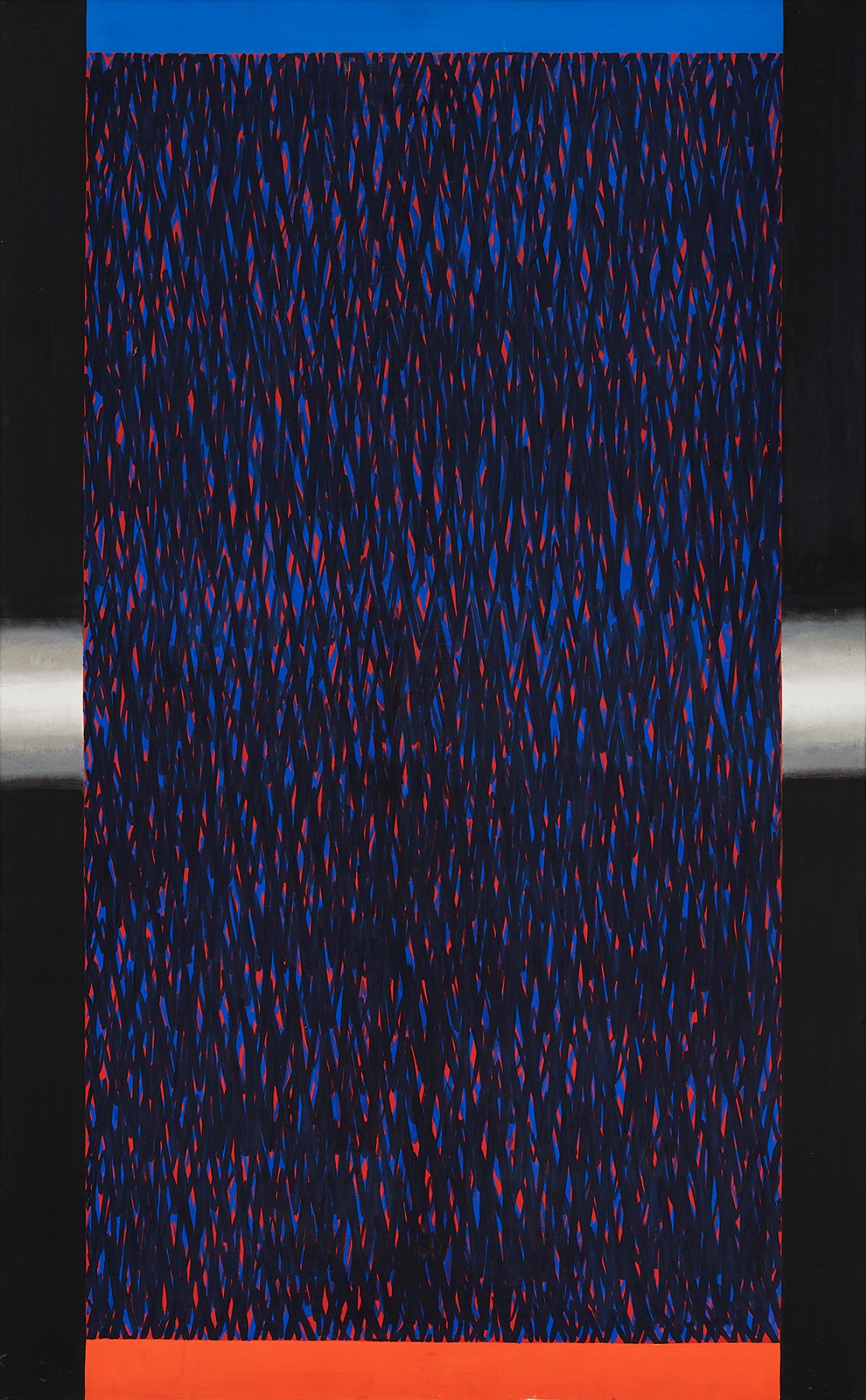
The different temperaments of the painters come out when you focus on how differently the light shines in their works, Scully’s more muted and melancholic, and staying closer to natural colors, Gierowski’s looking for the whole spectrum. In terms of brushstroke and speed, on the other hand, Scully has more bravado and brings in grand gestures. Both painters created a discipline that works with a set of formal limitations (which is one aspect of their abstraction), within which they expand, finding freedom and infinity. Scully often works in series, exhausting a certain motif through repetition, whereas Gierowski was less inclined to series but committed to making a different painting with just a little shift in approach, changing only one of the parameters.
Paradoxically, in the end it does not matter that much if the paintings of the two artists look similar in terms of composition, or if they use the same shapes. It is not at that level where they merge in the mind or experience of the viewer. It turns out that the abstraction is a quality situated inside the work, more so than being an outer identifier. It is something that might make the painting shine, or transmit a feeling of unity, or lift the spirit; it cannot really be fixed or pointed at. And it is not something that comes out successfully in every painting; it has to be conquered or met with by the artist. The real mystery is when an abstract painting transcends its formal appearance, and appears relevant to life. The whole universe might be in there, and yet you cannot prove one thing.
Title image: Beyond the Line. Photo: Adam Gut